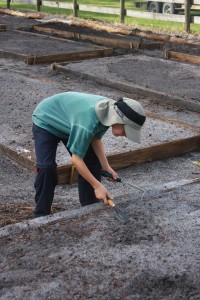The little school’s administrative office sits above a church garage, upstairs from a make-shift hallway lined with pink sheets. It’s sometimes cooled by a window-unit air conditioner. On a mid-May day on Florida's Gulf coast, the air conditioner is off, the windows are open and the office manager is explaining how fresh air jibes with the school's worldview. “We’re holistic,” she says.
 The school puts a fresh spin on modern education, too. No textbooks. No computers. No Capri Suns. In one classroom, no desks.
The school puts a fresh spin on modern education, too. No textbooks. No computers. No Capri Suns. In one classroom, no desks.
This is the Waldorf Sarasota. The distinctive, private school with 34 students in pre-school to fourth grade is one of about 160 such schools across the United States. The Waldorf approach defies easy labels, but it puts a premium on physical play, hands-on learning and creativity. Cooking, gardening and knitting socks are in. Testing is out.
The Waldorf way was forged by an idealistic, early 20th century vision that didn’t think it crazy to put the children of cigarette factory workers and world peace in the same sentence. Today’s Waldorf schools continue to intrigue because of how they approach curriculum and instruction and whole-child development.
They also stand out because they’re big fans of expanded school choice.
“Private school shouldn’t be elitist,” said Nikosha Orchard, enrollment director for Waldorf Sarasota. “We believe Waldorf is really wonderful elementary education, so if it becomes available to more children, that’s great.”
The fast changing landscape of public education is dotted with square pegs. (more…)